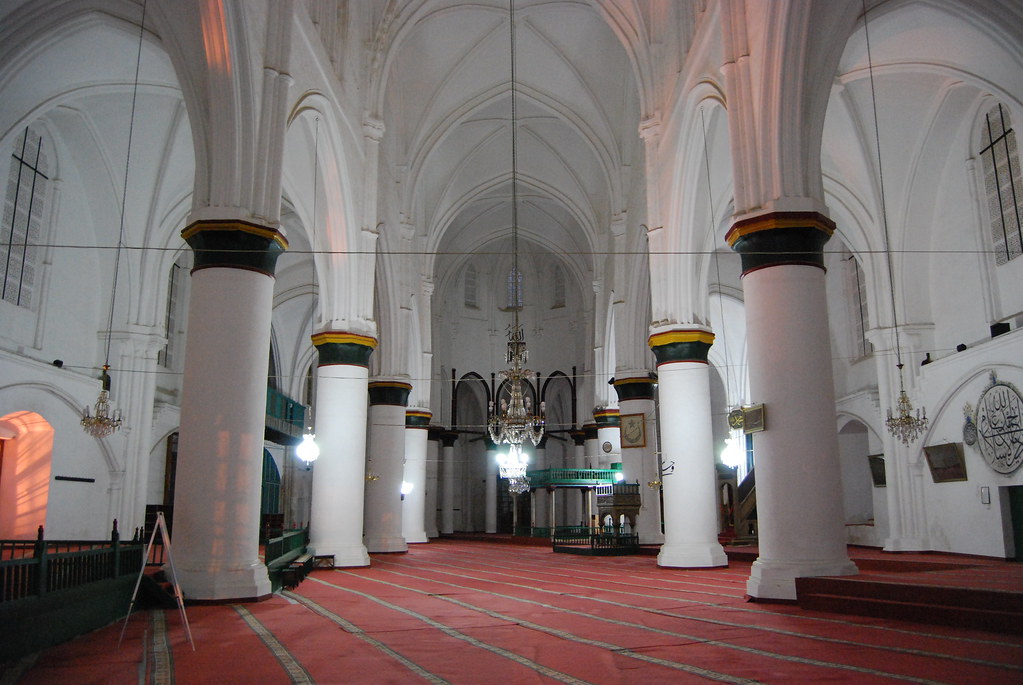This is the first installment of a new series of posts that record the first impressions of travelers in Nicosia over the last few centuries.
"From this place [Chyterea] we travelled to the southwest to Nicosia. I went to the house of the consul’s broker, and was also recommended to the dragoman of the mosolem; both of them assisted me in seeing that city, which is towards the west end of the plain, and is supposed to be the old Tremitus; it is the capital of Cyprus, where the mosolem or governor resides; it is fortified with very large ramparts, but has no foffee(?), and consequently is a very indifferent fortification; the ramparts are faced with the hewn stone of the old walls; the circumference of them is about two miles...
... The walls of the ancient city, which were built with semicircular towers, may be traced all around, and they seem not to have been much less than four miles in compass. There are still remaining in the city several very magnificent houses, which are of the times of the kings of Cyprus; some of them have been repaired by the Venetians, according to the rules of modern architecture; and there is a most beautiful Corinthian door-case of a house which, they say, belonged to the Venetian general. The cathedral church, now a mosque, is a large building, and exceeds that of Famagusta in the front, as much as it falls short of it in other respects; there was also a church here dedicated to the holy cross, and another of the Augustinians, which are now mosques...
... The Greeks have several new built churches in the city, and the Latin fathers of the convent of the holy sepulcher at Jerusalem have a small convent. Though there are very few Armenians yet they have possession of an ancient church here. There is a great manufacture of cotton stuffs, particularly of very fine dimities, and also half satins of a coarse fort; they have here the best water in Cyprus brought by an aqueduct from the mountains."
"From this place [Chyterea] we travelled to the southwest to Nicosia. I went to the house of the consul’s broker, and was also recommended to the dragoman of the mosolem; both of them assisted me in seeing that city, which is towards the west end of the plain, and is supposed to be the old Tremitus; it is the capital of Cyprus, where the mosolem or governor resides; it is fortified with very large ramparts, but has no foffee(?), and consequently is a very indifferent fortification; the ramparts are faced with the hewn stone of the old walls; the circumference of them is about two miles...
 |
| Point of one of the 11 heart or arrow-shaped bastions that surround the Walled City of Nicosia. |
... The walls of the ancient city, which were built with semicircular towers, may be traced all around, and they seem not to have been much less than four miles in compass. There are still remaining in the city several very magnificent houses, which are of the times of the kings of Cyprus; some of them have been repaired by the Venetians, according to the rules of modern architecture; and there is a most beautiful Corinthian door-case of a house which, they say, belonged to the Venetian general. The cathedral church, now a mosque, is a large building, and exceeds that of Famagusta in the front, as much as it falls short of it in other respects; there was also a church here dedicated to the holy cross, and another of the Augustinians, which are now mosques...
 |
| The "cathedral church" mentioned above, formerly known as St. Sofia Cathedral is now Selimiye Mosque |
... The Greeks have several new built churches in the city, and the Latin fathers of the convent of the holy sepulcher at Jerusalem have a small convent. Though there are very few Armenians yet they have possession of an ancient church here. There is a great manufacture of cotton stuffs, particularly of very fine dimities, and also half satins of a coarse fort; they have here the best water in Cyprus brought by an aqueduct from the mountains."
Pococke, R. 1745. A Description of the East, and Some other Countries. Vol. II Part I. Observations on Palaestine or the Hold Land, Syria, Mesopotamia, Cyprus, and Candia. Chapt. IV. Of Nicosia, Gerines, Lapta, and Soli: 221-2

No comments:
Post a Comment